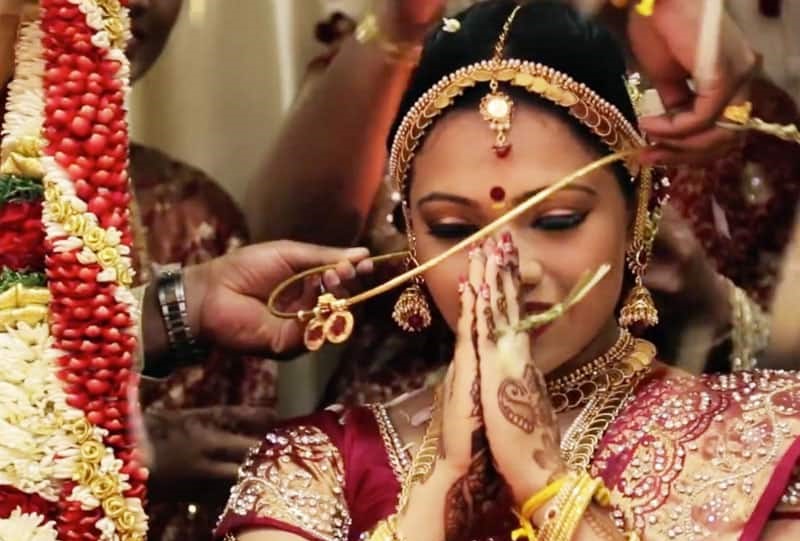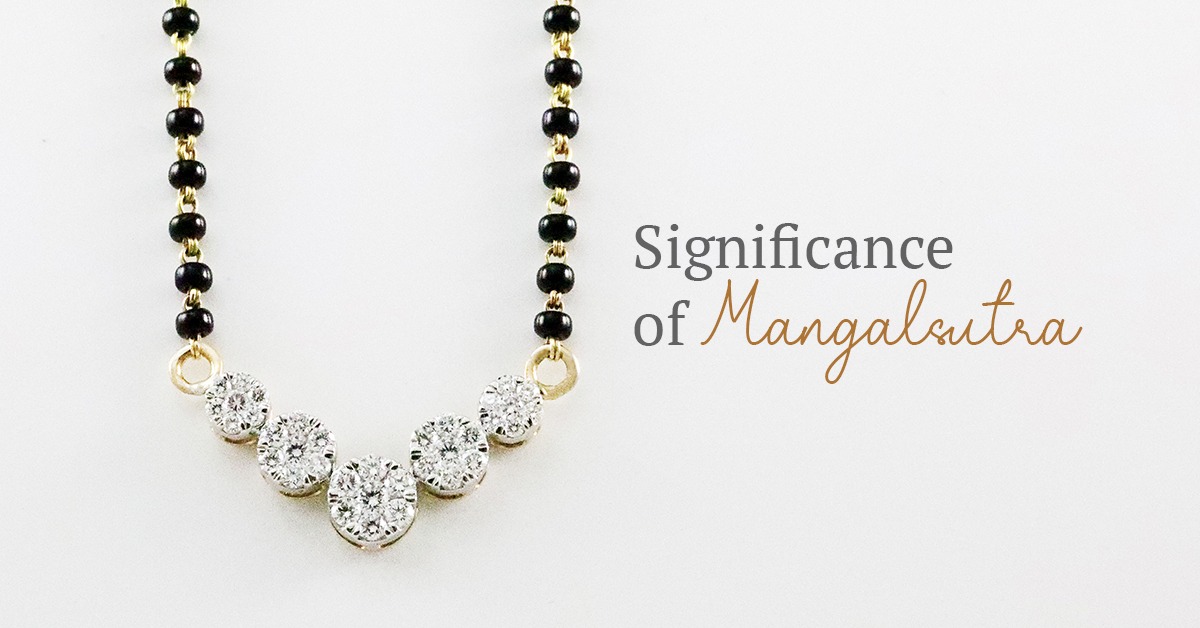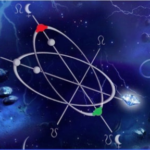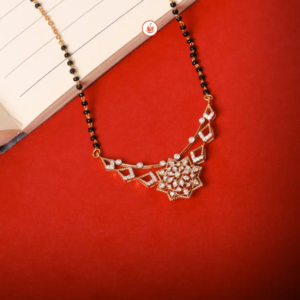The Cultural Significance of Mangalsutra

The term “Mangalsutra” is derived from the combination of two words: “Mangal,” meaning “auspicious,” and “sutra,” meaning “thread.” This sacred symbol represents the eternal bond between the bride and her husband. During the wedding ceremony, the groom solemnly fastens the auspicious thread of the Mangalsutra around the bride’s neck. The significance of the Mangalsutra encompasses spiritual, emotional, and even scientific aspects.
Typically, a Mangalsutra consists of two strands of black beads and is adorned with a pendant. It serves as a powerful emblem of the marital union, embodying profound meanings and sentiments. The Mangalsutra holds immense value not only for its aesthetic appeal but also for its spiritual and emotional connotations.
For those seeking an extensive collection of Mangalsutras, exploring options such as heavy gold Mangalsutras can provide a range of designs and styles to suit individual preferences and traditions. These designs exemplify the beauty and grandeur associated with this cherished piece of jewelry, further enhancing the significance it holds within Indian culture and weddings.
The significance of Mangalsutra
The Mangalsutra holds profound symbolism deeply rooted in religious and spiritual beliefs. It serves as a powerful representation of the sacred vow “Until death do us part,” which is symbolically sealed when the groom ties the knot around the bride’s neck. This significant piece of jewelry is considered a symbol of marriage itself, signifying the lifelong commitment and bond between the bride and groom.
In South India, the Mangalsutra is adorned with three knots, each carrying its own significance. These knots symbolize loyalty, dedication, and devotion to three entities: the husband, the family, and the lord, respectively. This threefold representation emphasizes the importance of staying true to these aspects within the marital union. Additionally, in certain regions of India, after the groom ties the first knot, his sisters follow with two more knots, further solidifying the connection between the bride and the groom’s family.
The black beads featured in the design of the Mangalsutra hold a special purpose. They are believed to have protective qualities, warding off the evil eye and safeguarding the newlywed couple from harm. Furthermore, it is widely believed that the wife wearing the Mangalsutra brings good fortune to her husband and shields him from misfortune and dangers that may come their way.
The Mangalsutra’s significance goes beyond its physical appearance and serves as a powerful symbol of eternal love, commitment, and the sacred bond shared between a husband and wife. Its presence on the bride’s neck is not only an adornment but a testament to the enduring marital union and the spiritual protection it provides.
Types of Mangalsutra
The significance of the Mangalsutra in Hindu traditions is fascinating and intriguing. While its origins lie in Southern India, this tradition has now been embraced in North Indian weddings as well. Interestingly, the Mangalsutra is known by different names in South India, with the most common being “Thaali” or “Thirumangalyam,” which consists of a long yellow thread and a pendant.
In contrast, the Mangalsutra in North India typically features black beads and a golden pendant in various designs, known as “Tanmaniya.” The act of tying the Mangalsutra often takes place in a separate formal ceremony, distinct from the wedding itself, in North Indian customs. However, it is not uncommon to witness weddings where the bride chooses not to wear the Mangalsutra. It’s important to note that the significance of the Mangalsutra may vary in different regions and traditions. For instance, in Bengali weddings, brides are often seen wearing conch bangles called “Shakha Paula bangles,” which hold their own symbolic meaning.
It’s worth mentioning that customs and traditions evolve and spread rapidly. While the Mangalsutra is deeply rooted in religious customs and age-old traditions, its significance transcends these boundaries. It has become a cherished symbol of marital commitment and love, holding meaning and value beyond its religious and cultural origins. The Mangalsutra has found its way into the hearts of many, regardless of their specific customs, as a representation of the eternal bond shared between a husband and wife.
How does the Mangalsutra benefit health?
The significance of the Mangalsutra extends beyond its religious and spiritual aspects. Surprisingly, there is a scientific basis to its importance. According to Hindu culture, it is believed that the Mangalsutra should be crafted from pure gold and worn beneath the innermost garment. Ayurvedic texts highlight the therapeutic properties of pure gold, particularly in promoting heart health. Wearing a Mangalsutra made of pure gold in direct contact with the skin over the heart is believed to enhance cardiac function by attracting cosmic waves from the surroundings. These waves are thought to contribute to a harmonious and healthy relationship between the couple.
Additionally, the Mangalsutra is considered to be an immunity booster. It is believed to improve circulation and invigorate the wearer, providing a constant source of energy. Wearing a Mangalsutra made of pure gold as recommended is also believed to help maintain balanced blood pressure. According to Ayurvedic principles, it is further believed to awaken the energy within a woman’s body by stimulating the Surya-nadi, or the Sun channel.
These scientific aspects add another layer of significance to the Mangalsutra, showcasing its potential health benefits and its ability to positively impact the well-being of the wearer. It demonstrates how this traditional adornment transcends cultural and spiritual boundaries, offering not only a symbol of marital commitment but also potential physical and emotional benefits for the individual.
The Trends in Mangalsutra
The Mangalsutra has evolved into a significant component of wedding jewelry traditions, and jewelry artisans are introducing various types of this auspicious thread. These modern iterations showcase creative innovations, with some Mangalsutras featuring vibrant colors and gemstones embedded within them. More recently, there has been a growing trend towards Mangalsutras adorned with diamonds and intricate, sophisticated designs.
In today’s fast-paced world, where an increasing number of women are pursuing professional careers, there is a preference for simple yet elegant designs that can be comfortably worn on a daily basis. These lightweight Mangalsutras are favored by modern brides. Among the contemporary designs, floral motifs have gained immense popularity. Furthermore, many brides seek to personalize their Mangalsutras by incorporating their zodiac signs into the pendant, adding a unique touch that reflects their individuality.
If you’re interested in exploring the latest trends in Indian wedding jewelry, it’s worth exploring reputable gold jewelry shops in India, which offer a diverse range of options to suit different tastes and preferences.
However, it’s important to remember that the Mangalsutra is not merely a necklace chosen to complement a woman’s accessories or attire. It carries deep symbolic meaning as a representation of love, respect, and trust between a husband and wife. Beyond its aesthetic appeal, the Mangalsutra serves as a spiritual and traditional safeguard for the marriage, acting as a powerful symbol of commitment and unity.








Add comment
You must be logged in to post a comment.